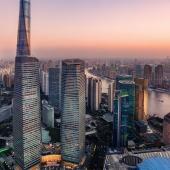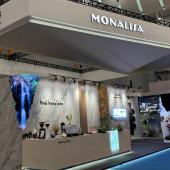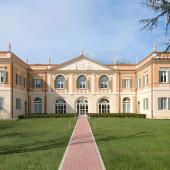The construction industry in North Africa: Morocco

According to an ITA (Italian Trade Agency) report published in November, the Moroccan construction industry has generated a turnover of more than 500 million euros and an added value of 3.2 billion euros over the last five years, corresponding to average annual growth of 5%. Following a small contraction in 2013, the industry closed 2014 with positive figures.
The medium-level residential segment experienced 7% growth in the first half of the year compared to the same period in 2013 with a production of 7,362 housing units. The FNPI (National Federation of Property Developers) has signed an agreement with the Ministry of Habitat for the construction of 20,000 medium-level houses by the end of 2016.
The luxury building segment has also performed strongly, one particular highlight being Morocco's first Smart City project called "Casa Green Town". Located in the town of Bouskoura, 20 km from Casablanca, it will extend over an area of 356 hectares and will comprise 820 villas and 370 apartments.
One major project in the sustainable building segment is the green city of Benguérir (30 km from Marrakech), which will cover an area of 1,000 hectares and will have 100,000 inhabitants. As part of efforts to gain LEED certification, it will provide town planning services that safeguard the environment and natural spaces.
The construction sector will also receive a boost from the country's tourism development strategies. SMIT (Moroccan Tourism Engineering Corporation) aims to attract investments of 1.7 billion euros in hotel construction, increasing the number of beds to 28,000. The government has also launched the Vision 2020 programme, which includes high added-value tourist projects in emerging areas aimed at expanding the total hotel capacity to 375,000 beds. Another 50 million euros, partly funded by the European Bank for Reconstruction and Development, has been allocated for the construction of four 3 and 4-star hotels, two in Casablanca and two in Marrakech.
In Rabat, a 110-hectare development called Saha Al Kbira will include a marina, cultural facilities, housing and shops, as well as the Rabat Grand Theatre designed by famous Iraqi architect Zaha Hadid. This project is due to be completed by 2020 and has involved investments of around 584 million euros.
In Casablanca a multifunctional centre is under construction (estimated value 32 million euros) as part of the Wessal Casablanca-Port project, which involves converting the port area into a 12-hectare tourist hub and cultural centre. The project will involve an investment of more than 532 million euros and will include the Hassan II Mosque, the old medina and the cruise terminal, as well as a science city (with 5 permanent exhibition halls), a scientific library, offices, shops and hotels.
Investments in Tangiers (an estimated 680 million euros to be allocated by 2017) will also be aimed at modernising the city and reviving its infrastructure and tourist industry. A new Arts and Culture Centre due to be built at the centre of the Bay of Tangiers is scheduled to open in 2016, while a total of 27 school buildings will be constructed at a cost of 33 million euros. A sports city is also due to be built over the next two years as part of a public-private partnership at an estimated expense of 53 million euros.
Major investments are planned for urban redevelopment of the cities of Salé (90 million euros) and Tétouan (485 million euros by 2018).
At a national level, contracts totalling more than 670 million euros are expected to be put out for tender in the public infrastructure segment. Major projects include the construction of two university hospitals in Tangiers and Rabat and the remodelling of more than 10,000 mosques. A total of 100 million euros will be spent in the airport sector for the renovation of Terminal 1 of Casablanca Mohammed V airport and expansion of the Civil Aviation Academy.
Back to intro | Morocco | Egypt | Algeria | Tunisia | Lybia
Did you find this article useful?
Join the CWW community to receive the most important news from the global ceramic industry every two weeks





















